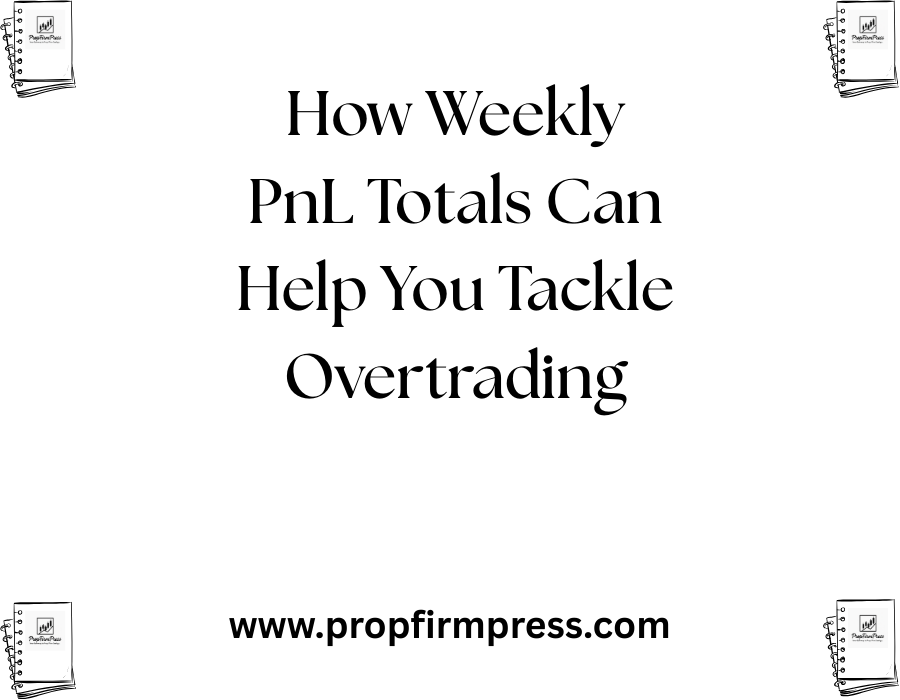How Weekly PnL Totals Can Help You Tackle Overtrading (2)
Overtrading is a common challenge that many traders face, often resulting in diminished returns and increased emotional stress. When traders find themselves placing too many trades without a well-defined strategy or clear metrics, the overall quality of their trading decisions drops. One effective tool to combat this problem is the use of weekly Profit and Loss (PnL) totals. By regularly calculating and reviewing these metrics, traders can gain valuable insights into their performance patterns and curtail impulsive or unnecessary trades.
Understanding the Role of Automated Weekly PnL Tracking
Manual tracking of trades can be tedious and prone to errors, which makes automated weekly PnL tracking essential for modern traders. Automation enables efficient collection and calculation of all trading activities, delivering accurate and timely summaries without added workload. This allows traders to focus on refining their strategies based on reliable data instead of spending excessive time on record-keeping. Moreover, automated calculation helps highlight profit trends and loss patterns that may otherwise go unnoticed, thereby giving traders an objective view of their weekly performance.
Identifying Overtrading Patterns through Weekly Metrics
Weekly PnL totals act as an early warning system for spotting overtrading behavior. When the number of trades executed increases but without corresponding gains, the weekly performance graph will show stagnation or decline. By comparing these weekly figures against trading volume, frequency, and size, traders can pinpoint periods where excessive trading leads to diminishing returns. This awareness enables them to pause and reevaluate their approach, potentially preventing further overhead losses caused by fatigue or impulse-driven trades.
How Weekly PnL Data Supports Discipline and Risk Management
Discipline is paramount in trading, and weekly PnL reporting cultivates it by setting tangible accountability standards. When traders regularly review their profits and losses at the end of each week, they become more conscious of staying within risk parameters and trade limits. This consistent feedback discourages reckless trading behavior and promotes adherence to a pre-defined trading plan. Additionally, analyzing weekly losses allows for timely adjustments in position sizing or stop-loss levels, thereby improving overall risk management practices.
The Psychological Benefits of Monitoring Weekly PnL Totals
Trading can be an emotional rollercoaster, with highs and lows that influence decision-making. Tracking weekly PnL totals offers psychological benefits by grounding traders in reality and reducing cognitive biases. Seeing an objective summary of their weekly performance helps traders accept setbacks as part of the process and avoid chasing losses. It also reinforces positive reinforcement when profitable weeks are recognized, motivating them to maintain better trading habits. Over time, this builds trader confidence and resilience against impulsive decisions.
Implementing Automated Weekly PnL Calculations into Your Workflow
Integrating automated weekly PnL tracking into your trading workflow begins with choosing the right tools and software that can capture trade data seamlessly. Many platforms allow connection to brokerage accounts or manual input with automatic calculations thereafter. Once set up, it is essential to schedule a fixed time each week to review the PnL reports thoroughly. During these reviews, analyze patterns, compare results against risk guidelines, and adjust your trading plan accordingly. This habit creates a proactive environment that helps avoid reactive or emotionally driven trading decisions.
Customizing Metrics to Meet Your Trading Style
While weekly PnL totals provide a snapshot of your overall performance, customizing additional metrics can offer deeper insights tailored to your trading style. For instance, tracking win rates alongside weekly profits can help differentiate between consistent small gains versus sporadic large wins. Incorporating metrics such as average holding period, max drawdown, and risk-reward ratios within the weekly calculations ensures a well-rounded assessment. Tailoring these metrics enhances your understanding of how specific strategies perform and clarifies when overtrading negatively affects your edge.
Using Weekly PnL Totals to Set Realistic Trading Goals
Setting achievable trading goals is critical for long-term success and preventing overtrading. Weekly PnL totals help establish benchmarks and performance targets that reflect realistic expectations based on past results. Instead of focusing on daily fluctuations, weekly aggregates smooth out volatility and provide a balanced view of progress. This fosters a sustainable approach to growth, discouraging the temptation to chase quick profits through excessive trades. With clear goals supported by weekly data, traders develop patience and confidence in their methods.
How to Leverage Weekly PnL Totals for Improved Strategy Optimization
Weekly PnL totals supply critical feedback necessary for the continual optimization of trading strategies. By examining which weeks generated gains or losses, traders can correlate these outcomes with specific market conditions, trade types, or timing. This iterative process helps identify strengths worth scaling up as well as weaknesses that require fine-tuning or elimination. Ultimately, regular PnL analysis accelerates learning curves and promotes disciplined experimentation with strategy parameters without falling into the trap of impulsive overtrading.
Conclusion: Strengthening Your Trading Through Consistent PnL Monitoring
Incorporating weekly PnL totals into your trading routine is a powerful way to tame overtrading. Automated calculation of these metrics eliminates guesswork and provides objective insight into your trading patterns and profitability. Systematic review of weekly performance nurtures discipline, improves risk management, and sharpens psychological resilience. Additionally, customizing your metrics and setting realistic goals anchored on weekly data helps maintain focus on sustainable growth. By harnessing the full potential of weekly PnL reporting, traders can break free from the cycle of overtrading and build a more effective, confident trading approach.
